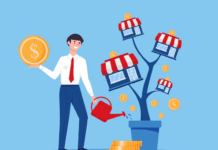Even the biggest companies you can think of today have at one point been just a few people in a garage or back room somewhere with a dream, and many of them have also been days away from collapsing. What sets the truly great companies apart from the also-rans is that they’ve always (so far) found a way to recover from huge setbacks and keep on growing, and there’s definitely an inspiration to be taken from these stories of the boom, bust, and boom again.
So here are 8 examples that Headway Capital has found some of our biggest brands and how they went to the brink of disaster and managed to come back:
FedEx
How many companies can you think of that owe their continued existence to the luck of the draw in a Las Vegas casino? Certainly there can’t be many of the scale of FedEx that fit that criteria, but back when founder Frederick Smith was trying to get the business of the ground – literally, in the case of paying to fuel his planes – he once took all $5,000 they had in the bank to a casino and walked out with $27,000. He later played down the significance of this in terms of FedEx’s survival, but if things hadn’t gone his way in Vegas, would it still be around today?
Apple
The tale of how Steve Jobs and Steve Wozniak set up Apple from a garage is a familiar one and an inspiration to home businesses everywhere of just what can be achieved. However, it wasn’t a smooth road from that garage to becoming the world’s first trillion dollar business earlier this year. A series of unsuccessful product launches, plus the departure of Jobs left Apple on the brink of insolvency in the late 90s. Fortunately, Jobs returned and with him came the swift change in fortunes with the launch of the iMac and iPod.
Marvel
The Avengers and Co may be ruling over the world’s multiplexes these days, but before Marvel got its movie-making act together, the comics giant was in serious trouble. Flagging behind DC and suffering from a misguided investment in trading cards, Marvel’s share price had dropped 90% between 1993 and 1996. A big investment from Merrill Lynch to finance the Cinematic Universe, followed by the purchase by Disney cemented Marvel’s big turnaround.
Delta
For decades, Delta was soaring high as one of America’s busiest airlines, but the dramatic downturn in the industry that followed the events of 9/11 left it facing oblivion. Cutting costs meant losing jobs and renegotiating contracts, and that was where Delta really started to get into trouble, particularly with regards to its pilots. Negotiations dragged on for years and the business ended up in bankruptcy until finally agreeing on a new plan in 2007. Since then, it’s been up, up and away again.
Nintendo
Long before Super Mario or Donkey Kong were in the picture, Nintendo almost went out of business because of the decline in the trading card industry in Japan. This was in 1960, many decades after the company had been founded, and it led to the Nintendo bosses trying out various industries (including hotels and taxis) before settling on making toys. These led onto electronic toys and video games and everything we know as Nintendo today, but even then it’s not been smooth sailing all of the time, as the failed Wii-U led to three years of losses in a row.
Netflix
When Netflix had to work out its next steps as both a streaming and DVD rental company, it decided to split into two separate services, with the DVD arm to be called Qwikster. However, its subscribers weren’t impressed with the plan and 800,000 canceled, which led to a hasty reversal by Netflix as its stock price plummeted accordingly. Since then, it’s grown into a global streaming superpower, even making its own films and TV shows and winning awards for them.
LEGO
Sometimes it can feel like fate is against you in the business world and this may be how LEGO’s bosses felt in the early 20th Century as the woodworking business suffered three major fires to its premises in the space of forty years. However, each time, it soldiered on, with the final fire in 1960 leading to an end of wooden toy production as it focused entirely on the little plastic bricks that had started to become popular. Focusing on its core product also helped over 40 years later when financial trouble nearly meant the end of LEGO, so it sold its theme parks and got back to just making great toys.
Ford
These stories should demonstrate that hard times can come to any business, and here is another example of that, with even a brand as famous and ubiquitous as Ford struggling at the start of the 21st Century, along with all of the other big car makers. Like with LEGO, a stripping away of the non-essentials was required to dig Ford out of trouble, so it sold off many of the brands it had bought over the years and that – along with a Government bailout – helped Ford get back to profitability.
Find a Home-Based Business to Start-Up >>> Hundreds of Business Listings.

























































